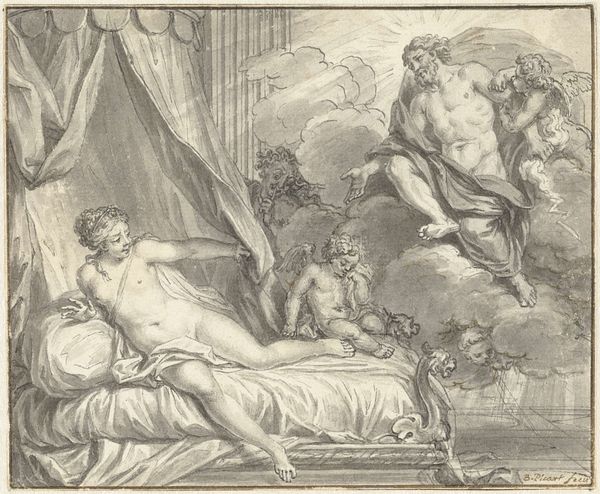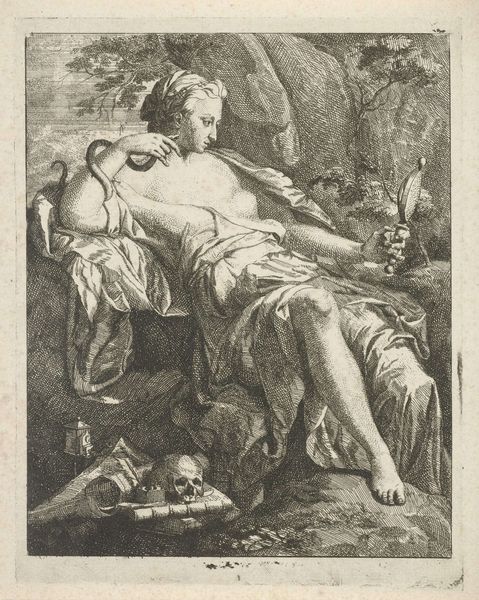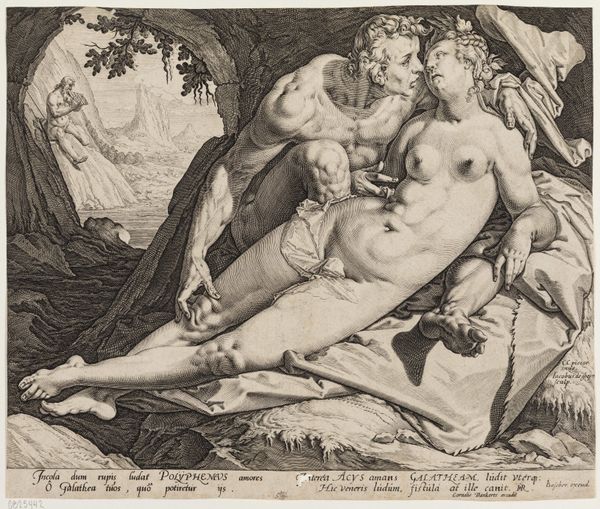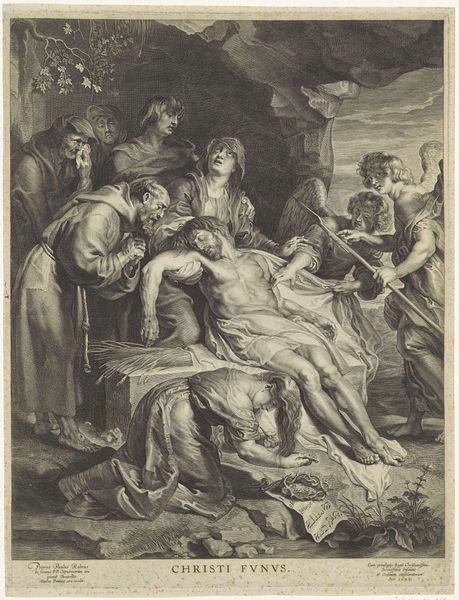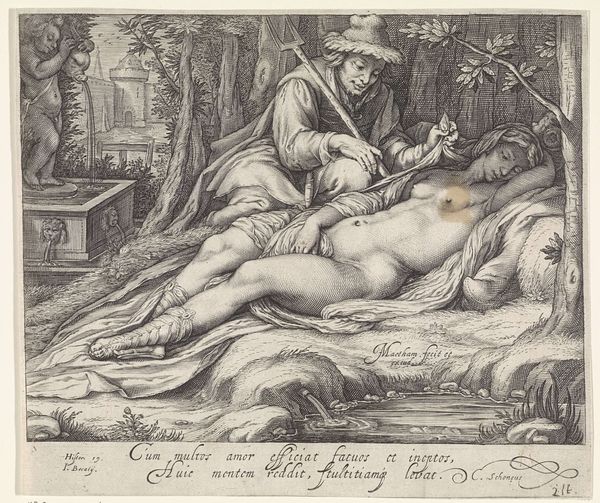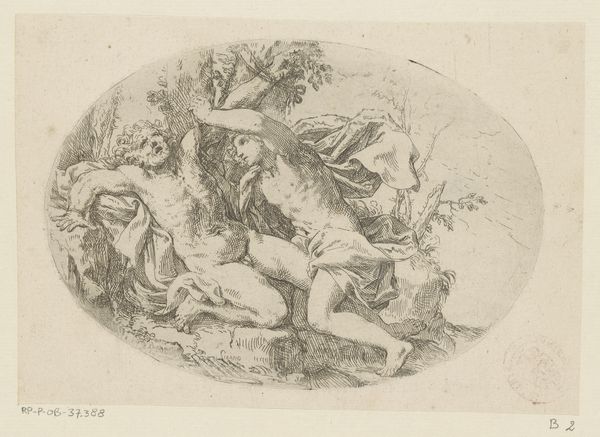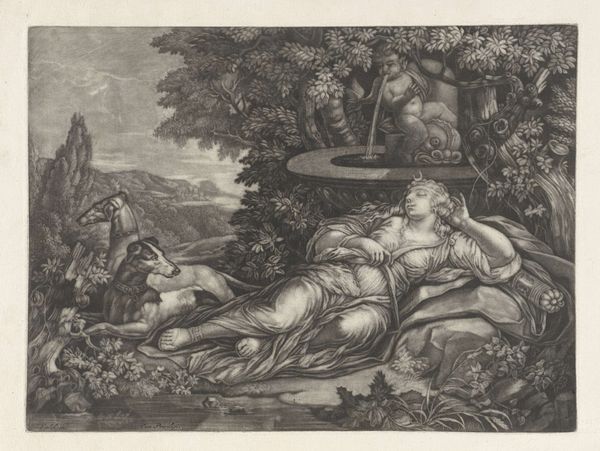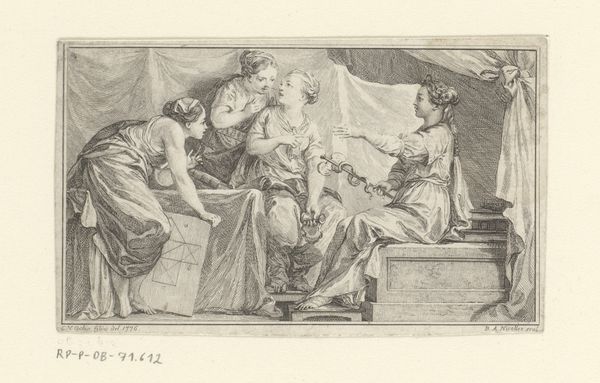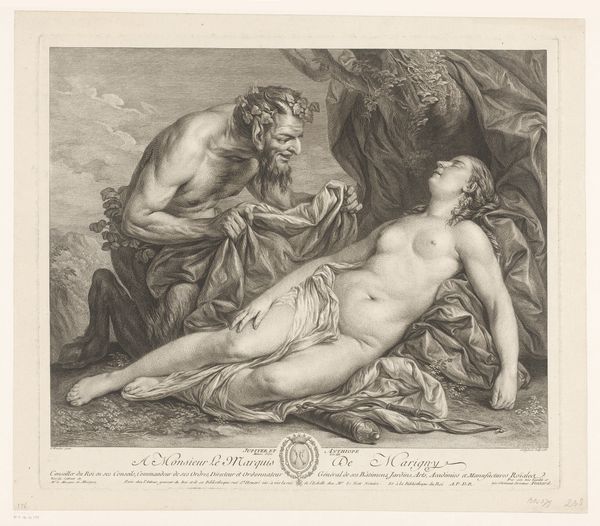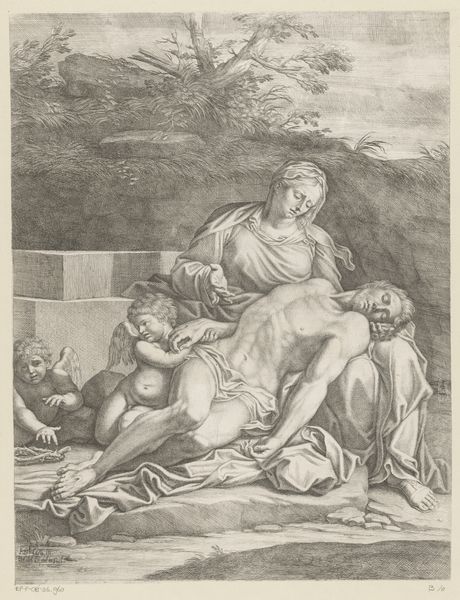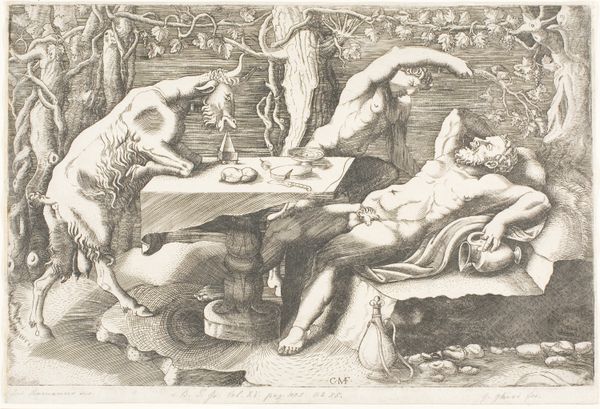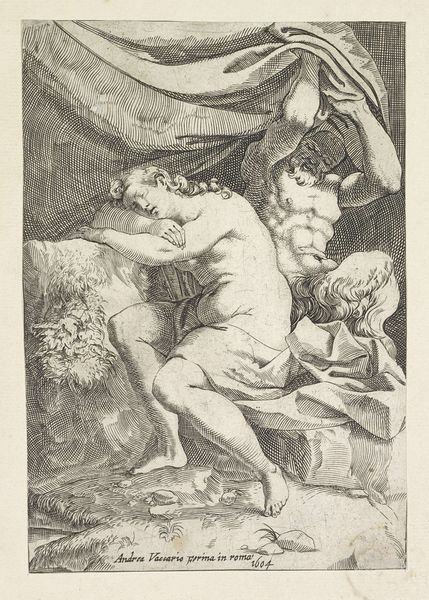
print, engraving
#
baroque
# print
#
old engraving style
#
figuration
#
history-painting
#
italian-renaissance
#
engraving
Dimensions: height 195 mm, width 255 mm
Copyright: Rijks Museum: Open Domain
Curator: Let's consider "The Body of Christ Mourned by Angels," an engraving produced sometime between 1637 and 1691, by Giovanni Cesare Testa. The image employs a somewhat baroque aesthetic. What are your immediate thoughts on the work? Editor: The grief is palpable. The delicate lines of the engraving only heighten the vulnerability of the scene. It’s interesting how the angels don’t simply grieve, but attend to the body. A tangible representation of compassion and care in the face of loss. Curator: Yes, and observe how Testa utilizes line weight to create depth and focus. The dense hatching around Christ's torso and the angels' faces contrasts sharply with the lighter, almost ethereal rendering of the background landscape, effectively pushing the foreground figures forward. Semiotically, this juxtaposition enhances the sense of immediacy and sorrow. Editor: Absolutely. And that brings me to the broader iconography at play. Angels, often symbols of hope and divine intervention, here are rendered as empathetic figures. Their presence transforms the scene into a meditation on the intersection of divine and human sorrow, a key theme during that period as faith was being questioned. Notice their focused, almost clinical observation of the body—it evokes questions about the nature of mortality. Curator: Furthermore, consider the composition: Christ’s body sprawls across the horizontal axis, creating a sense of weight and finality. This deliberate arrangement emphasizes the absence of verticality—the absent symbol of spiritual transcendence. Note how the light emphasizes specific planes to amplify the corporeality and inert form of Christ. Editor: Indeed. The placement of Christ's body directly connects to centuries of art exploring loss. The specific gesture of the angels draws on older symbols of purification and mourning rituals. The landscape itself, a backdrop, seems almost indifferent, accentuating human isolation within the larger cosmic order. Curator: Fascinating how Testa interweaves structural composition and the use of semiotic and iconographic markers to achieve a complex and powerful expression of sorrow, underscoring both human and divine grief through form and symbol. Editor: Precisely. By combining this detailed examination of loss with identifiable visual and symbolic references, Testa crafts a work that resonates far beyond its immediate religious context.
Comments
No comments
Be the first to comment and join the conversation on the ultimate creative platform.
